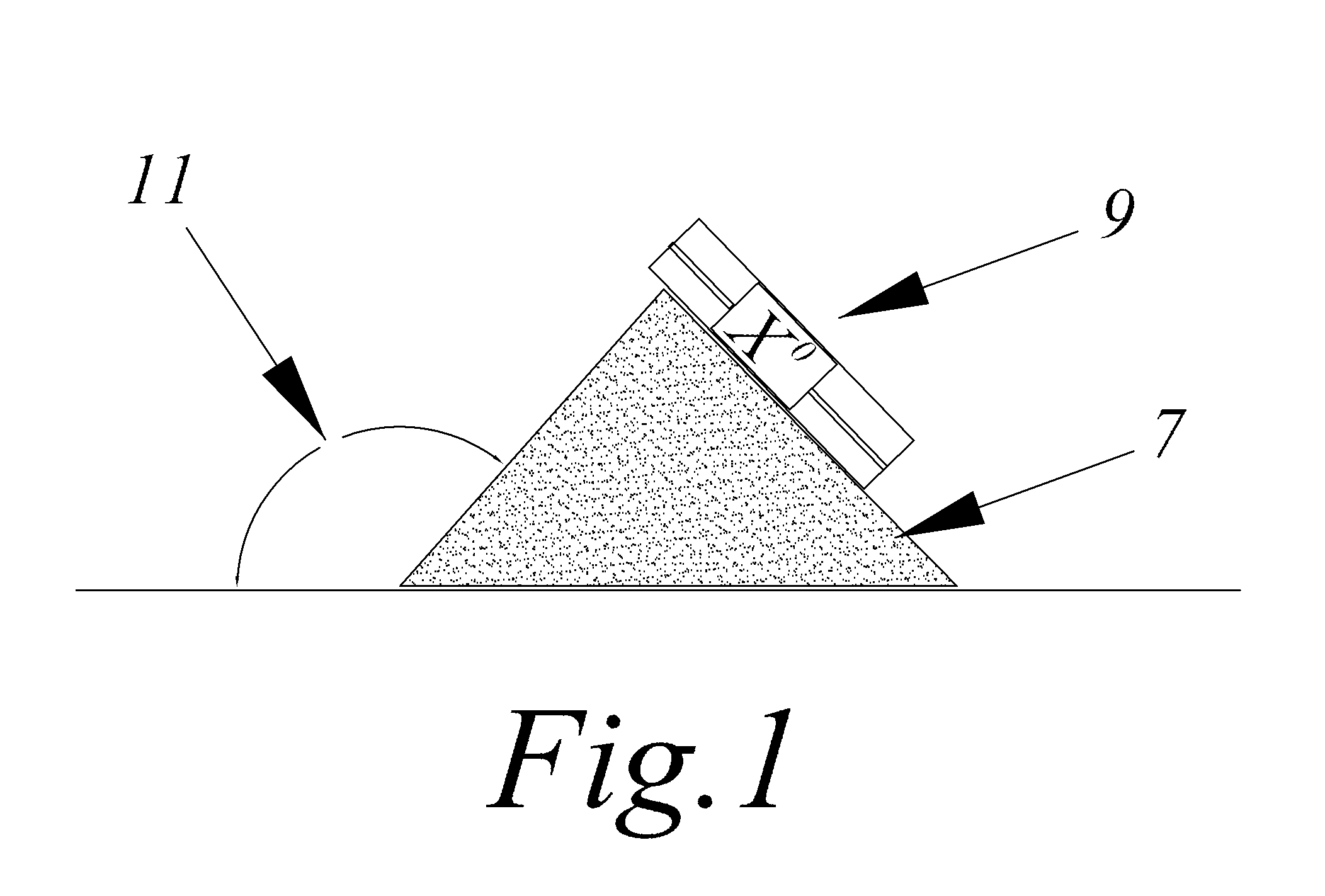Methods and Materials for Golf Course Sand Bunker Construction
a golf course and bunker technology, applied in golfing accessories, golf courses, applications, etc., can solve the problems of contaminating the sand in the bunker, increasing the sand contamination, and entanglement, and achieve the effect of superior drainage and stability
- Summary
- Abstract
- Description
- Claims
- Application Information
AI Technical Summary
Benefits of technology
Problems solved by technology
Method used
Image
Examples
Embodiment Construction
[0037]Referring now to FIG. 1, the definition of the sand angle of repose is illustrated. The measurement and angle of repose 11 of a pile of sand as indicated from a digital reading device 9 is shown. The bunker sand 7 is placed over the entire bunker floor. This angle of repose is an engineering property of granular materials. It is the maximum angle of a stable slope determined by friction, cohesion and the shapes of the particles. A very easy method of measuring the angle of repose is to use a digital level 9 or a similar device to determine the angle between a level area and the angle of repose 11 of the sand 7.
[0038]In order to properly design and build a golf course bunker, it is obvious to know the proper design parameters based upon the material that are available or chosen for use. Golf course builders have always considered some physical characteristic of sand when selection including the percolation rates, particle size, color, sand particle shape, playability and numero...
PUM
 Login to View More
Login to View More Abstract
Description
Claims
Application Information
 Login to View More
Login to View More - R&D
- Intellectual Property
- Life Sciences
- Materials
- Tech Scout
- Unparalleled Data Quality
- Higher Quality Content
- 60% Fewer Hallucinations
Browse by: Latest US Patents, China's latest patents, Technical Efficacy Thesaurus, Application Domain, Technology Topic, Popular Technical Reports.
© 2025 PatSnap. All rights reserved.Legal|Privacy policy|Modern Slavery Act Transparency Statement|Sitemap|About US| Contact US: help@patsnap.com



